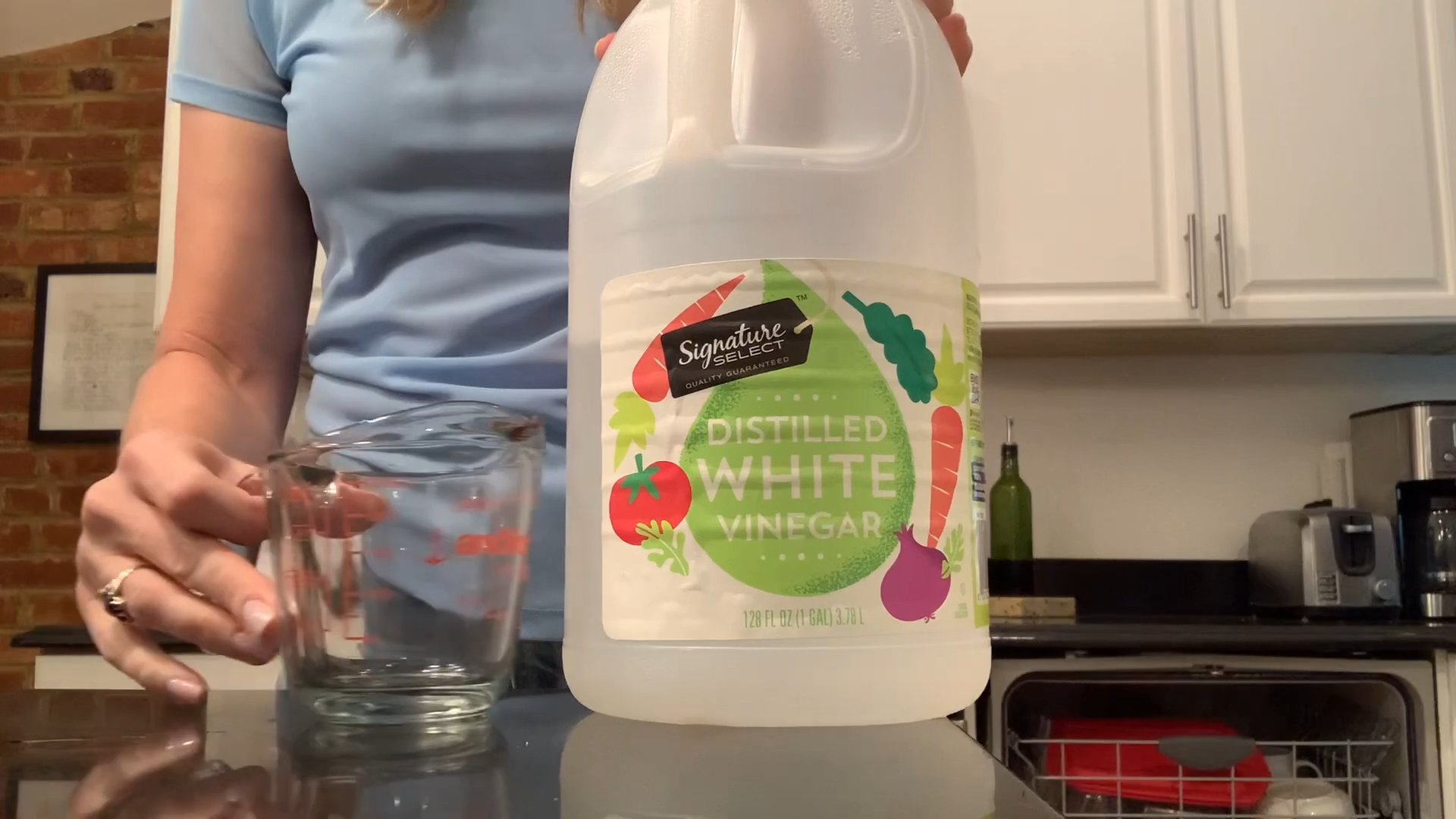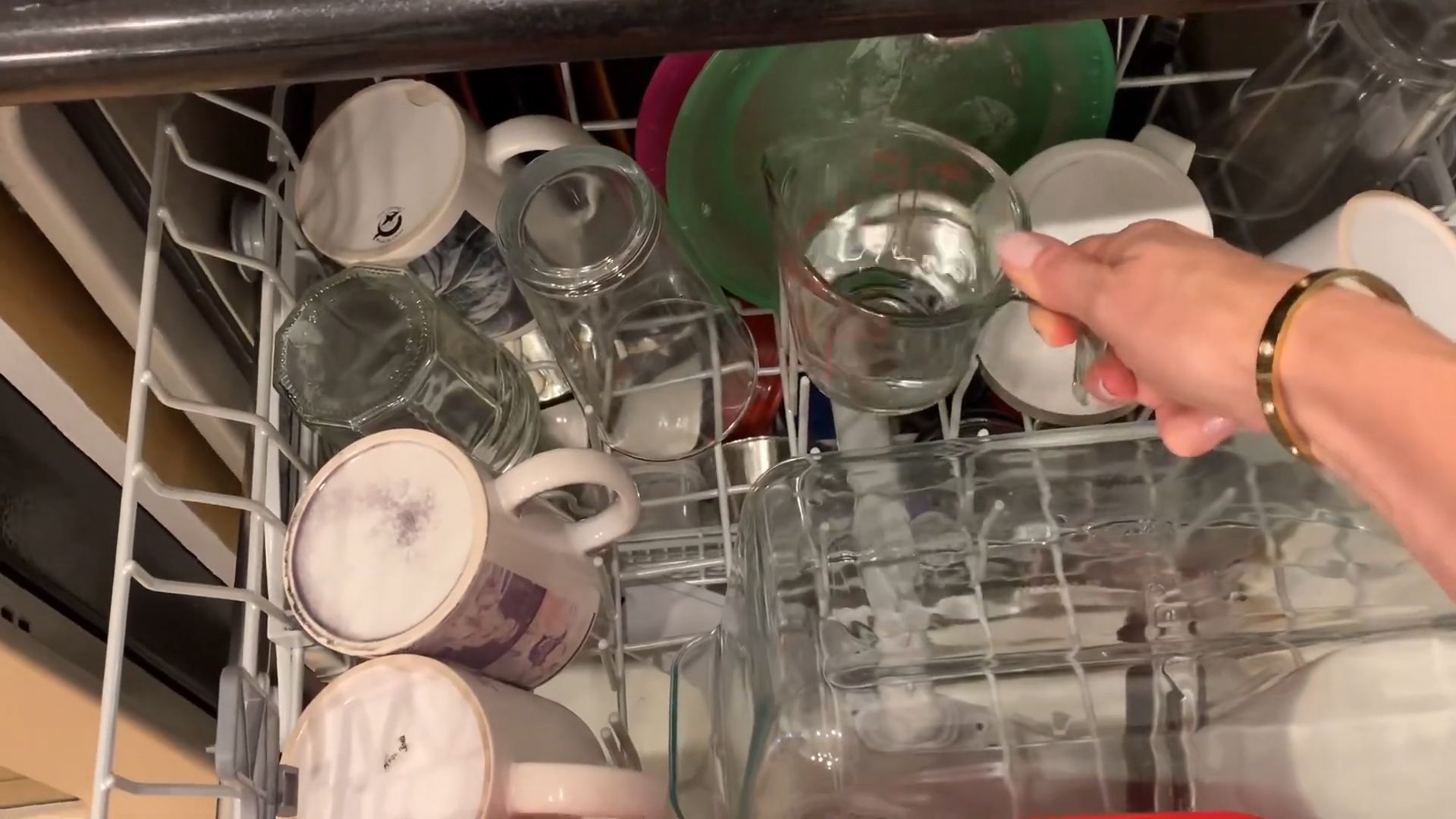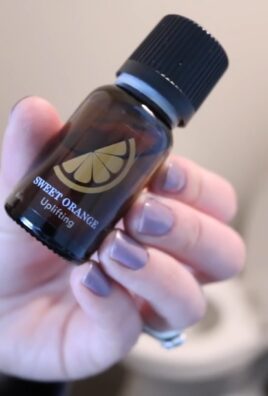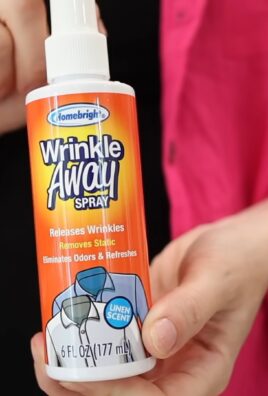Soil Free Rosemary Growing: Imagine fresh, fragrant rosemary sprigs always at your fingertips, ready to elevate your culinary creations. What if I told you that you don’t even need soil to make this a reality? That’s right, we’re diving into the fascinating world of hydroponics and exploring how to grow rosemary without the mess and fuss of traditional gardening!
For centuries, rosemary has been cherished not only for its culinary uses but also for its medicinal and symbolic significance. From ancient Greece, where it was believed to enhance memory, to its use in traditional folk remedies, rosemary has a rich and storied past. But you don’t need to be an ancient herbalist to enjoy this amazing herb.
In today’s fast-paced world, many of us lack the time or space for a traditional garden. That’s where this DIY trick comes in! Soil Free Rosemary Growing offers a simple, space-saving, and incredibly rewarding way to cultivate your own rosemary. Whether you live in an apartment with limited sunlight or simply want a cleaner, more efficient gardening method, this guide will empower you to grow healthy, thriving rosemary plants with minimal effort. Get ready to unlock the secrets of hydroponic rosemary cultivation and enjoy the fresh, aromatic flavor of homegrown herbs all year round!

Unlocking the Cleaning Power of White Vinegar: Your Ultimate DIY Guide
Hey there, fellow DIY enthusiasts! I’m super excited to share some of my favorite cleaning hacks using a true powerhouse ingredient: white vinegar! It’s cheap, readily available, and incredibly versatile. Forget those harsh chemicals; let’s dive into how you can use white vinegar to tackle a multitude of cleaning tasks around your home.
General Tips Before We Begin
Before we jump into the specific hacks, here are a few general tips to keep in mind:
* Always dilute vinegar with water: Undiluted vinegar can be too acidic for some surfaces and may cause damage. A common ratio is 1:1 (equal parts vinegar and water), but I’ll specify the ratio for each hack.
* Test in an inconspicuous area first: Before applying any vinegar solution to a large surface, test it on a small, hidden area to ensure it doesn’t cause discoloration or damage.
* Avoid using vinegar on certain surfaces: These include marble, granite, waxed wood, aluminum, and cast iron. The acidity can etch or damage these materials.
* Ventilation is key: Vinegar has a strong odor, so make sure to open windows or turn on a fan while cleaning.
* Use a spray bottle: A spray bottle makes it easy to apply the vinegar solution evenly.
* Microfiber cloths are your best friend: They’re absorbent, lint-free, and perfect for wiping down surfaces.
Cleaning Your Kitchen with White Vinegar
The kitchen is often the dirtiest room in the house, but vinegar can make cleaning it a breeze!
Cleaning Your Microwave
Microwaves can get incredibly gross with splattered food and lingering odors. Here’s how to clean yours with vinegar:
1. Prepare the vinegar solution: In a microwave-safe bowl, mix 1 cup of water with 1/4 cup of white vinegar.
2. Microwave the solution: Place the bowl in the microwave and heat it on high for 5-7 minutes. The solution will boil and create steam, loosening the grime.
3. Let it sit: Leave the door closed for another 5-10 minutes to allow the steam to work its magic.
4. Wipe it clean: Carefully remove the bowl (it will be hot!) and wipe down the inside of the microwave with a clean cloth or sponge. The grime should come off easily. For stubborn spots, you can dip the cloth in the remaining vinegar solution.
5. Clean the turntable: Remove the turntable and wash it with warm, soapy water.
6. Dry and reassemble: Dry all the components and reassemble the microwave.
Degreasing Your Stovetop
Stovetops are notorious for accumulating grease and food splatters. Vinegar can help cut through the grease and leave your stovetop sparkling.
1. Remove loose debris: Use a spatula or scraper to remove any loose food particles or burnt-on residue.
2. Prepare the vinegar solution: Mix equal parts white vinegar and water in a spray bottle.
3. Spray the stovetop: Generously spray the vinegar solution onto the stovetop, focusing on areas with heavy grease buildup.
4. Let it sit: Allow the solution to sit for 5-10 minutes to loosen the grease.
5. Wipe it clean: Use a damp cloth or sponge to wipe down the stovetop. For stubborn grease, you can sprinkle baking soda onto the surface before wiping.
6. Rinse and dry: Rinse the stovetop with clean water and dry it with a clean cloth.
Cleaning Your Dishwasher
Did you know you can use vinegar to clean your dishwasher? It helps remove mineral buildup, soap scum, and lingering odors.
1. Empty the dishwasher: Make sure your dishwasher is completely empty.
2. Place a bowl of vinegar: Pour 1 cup of white vinegar into a dishwasher-safe bowl and place it on the top rack of the dishwasher.
3. Run a hot cycle: Run the dishwasher on a hot cycle without any detergent.
4. Repeat monthly: I recommend doing this once a month to keep your dishwasher clean and functioning properly.
Cleaning Your Coffee Maker
Coffee makers can accumulate mineral deposits over time, which can affect the taste of your coffee. Vinegar can help remove these deposits and keep your coffee maker running smoothly.
1. Prepare the vinegar solution: Fill the water reservoir with equal parts white vinegar and water.
2. Run a brewing cycle: Run a full brewing cycle with the vinegar solution.
3. Rinse with water: Run two or three brewing cycles with fresh water to rinse out any remaining vinegar.
4. Clean the carafe: Wash the carafe with warm, soapy water.
Bathroom Cleaning Hacks with White Vinegar
The bathroom is another area where vinegar can shine. It’s great for removing soap scum, mildew, and hard water stains.
Cleaning Your Showerhead
Showerheads can get clogged with mineral deposits, which can reduce water pressure. Vinegar can help dissolve these deposits and restore your showerhead to its former glory.
1. Prepare the vinegar solution: Fill a plastic bag with white vinegar.
2. Submerge the showerhead: Secure the bag around the showerhead with a rubber band or twist tie, ensuring that the showerhead is completely submerged in the vinegar.
3. Let it soak: Let the showerhead soak in the vinegar for at least 30 minutes, or preferably overnight.
4. Remove the bag: Remove the bag and discard the vinegar.
5. Rinse and wipe: Rinse the showerhead with water and wipe it clean with a cloth.
6. Run the shower: Run the shower for a few minutes to flush out any remaining vinegar and debris.
Removing Soap Scum from Shower Doors and Walls
Soap scum can be a real pain to remove, but vinegar can make the job much easier.
1. Prepare the vinegar solution: Mix equal parts white vinegar and water in a spray bottle. For extra cleaning power, you can add a few drops of dish soap.
2. Spray the surface: Generously spray the vinegar solution onto the shower doors and walls, focusing on areas with heavy soap scum buildup.
3. Let it sit: Allow the solution to sit for 10-15 minutes to loosen the soap scum.
4. Scrub the surface: Use a sponge or scrub brush to scrub the surface. For stubborn soap scum, you can use a non-abrasive scouring pad.
5. Rinse and dry: Rinse the surface with clean water and dry it with a clean cloth.
Cleaning Your Toilet
Vinegar can be used to clean and deodorize your toilet.
1. Pour vinegar into the bowl: Pour 1-2 cups of white vinegar into the toilet bowl.
2. Let it sit: Allow the vinegar to sit for at least 30 minutes, or preferably overnight.
3. Scrub the bowl: Use a toilet brush to scrub the bowl, paying attention to any stains or mineral deposits.
4. Flush the toilet: Flush the toilet to rinse away the vinegar and debris.
Laundry Hacks with White Vinegar
Vinegar isn’t just for cleaning surfaces; it can also be used in your laundry routine!
Fabric Softener
Vinegar can be used as a natural fabric softener. It helps to relax the fibers in your clothes, making them softer and less prone to static cling.
1. Add vinegar to the rinse cycle: Add 1/2 cup of white vinegar to the fabric softener dispenser in your washing machine.
2. Run the wash cycle: Run the wash cycle as usual. Don’t worry, your clothes won’t smell like vinegar after they’re dry!
Removing Odors
Vinegar can help remove stubborn odors from your clothes, such as smoke, mildew, or sweat.
1. Soak clothes in vinegar solution: Fill a tub or sink with cold water and add 1 cup of white vinegar.
2. Soak for at least 30 minutes: Submerge the clothes in the vinegar solution and let them soak for at least 30 minutes, or preferably overnight.
3. Wash as usual: Wash the clothes as usual in your washing machine.
Brightening Whites
Vinegar can help brighten white clothes and remove dinginess.
1. Add vinegar to the wash: Add 1 cup of white vinegar to the washing machine along with your regular detergent.
2. Wash as usual: Wash the clothes as usual.
Other Household Cleaning Hacks with White Vinegar
Vinegar’s versatility extends beyond the kitchen, bathroom, and laundry room. Here are a few more ways you can use it around your home:
Cleaning Windows and Mirrors
Vinegar can leave your windows and mirrors streak-free and sparkling.

Conclusion
So, there you have it! Unleashing the power of white vinegar for home cleaning is not just a trend; it’s a revolution in how we approach a sparkling, healthy home. We’ve explored a range of applications, from banishing stubborn hard water stains to deodorizing your entire house, all with one simple, inexpensive ingredient. But why is this DIY approach a must-try?
Firstly, it’s about effectiveness. White vinegar, with its acetic acid content, is a surprisingly potent cleaner, capable of cutting through grease, dissolving mineral deposits, and killing many common household bacteria. It’s a natural disinfectant that gets the job done without the harsh chemicals found in many commercial cleaners.
Secondly, it’s about cost savings. A gallon of white vinegar costs a fraction of what you’d spend on a collection of specialized cleaning products. Think of all the money you’ll save, which you can then invest in other areas of your life!
Thirdly, it’s about environmental responsibility. By choosing white vinegar, you’re reducing your reliance on products that often contain harmful chemicals that can pollute our waterways and contribute to indoor air pollution. You’re making a conscious choice to create a healthier home and a healthier planet.
But the beauty of these white vinegar home cleaning hacks lies in their versatility. Feel free to experiment and adapt these methods to suit your specific needs. For instance, if you find the vinegar scent too strong, infuse it with citrus peels for a more pleasant aroma. Simply soak orange, lemon, or grapefruit peels in a jar of white vinegar for a week or two, then strain and use the infused vinegar as usual. You can also add a few drops of your favorite essential oils to your vinegar cleaning solutions for an extra boost of fragrance and cleaning power. Lavender, tea tree, and eucalyptus oils are all excellent choices.
Another variation to consider is the strength of the vinegar solution. For heavily soiled areas, you can use undiluted white vinegar. For lighter cleaning tasks, a 50/50 solution of vinegar and water will often suffice. Always test any cleaning solution on an inconspicuous area first to ensure it doesn’t damage the surface.
Don’t be afraid to get creative! Use white vinegar to clean your microwave by heating a cup of vinegar and water in it for a few minutes. The steam will loosen grime, making it easy to wipe away. Freshen up your laundry by adding a cup of white vinegar to the rinse cycle. It will help remove detergent residue and soften fabrics naturally. Even your dishwasher can benefit from a vinegar rinse – simply pour a cup into the bottom of the dishwasher and run a cycle.
We’re confident that once you experience the cleaning power and versatility of white vinegar, you’ll be hooked. It’s a simple, effective, and eco-friendly way to keep your home sparkling clean. So, ditch the harsh chemicals and embrace the power of white vinegar!
We encourage you to try these DIY white vinegar home cleaning hacks and share your experiences with us. Let us know what worked best for you, what variations you tried, and any other tips you’ve discovered. Together, we can create a community of eco-conscious cleaners who are passionate about creating healthy and sustainable homes. Share your stories and photos on social media using #WhiteVinegarCleaningHacks – we can’t wait to see your results!
Frequently Asked Questions (FAQs)
Is white vinegar safe to use on all surfaces?
While white vinegar is a versatile cleaner, it’s not suitable for all surfaces. Avoid using it on natural stone surfaces like marble, granite, and limestone, as the acidity can etch and damage them. It’s also best to avoid using vinegar on waxed furniture, as it can strip the wax finish. Always test any cleaning solution on an inconspicuous area first to ensure it doesn’t cause any damage or discoloration. For delicate surfaces, consider diluting the vinegar solution further or using a gentler cleaning method.
What is the best type of white vinegar to use for cleaning?
Plain white distilled vinegar is the best choice for cleaning. It’s inexpensive, readily available, and contains the right amount of acetic acid (typically 5%) for effective cleaning. Avoid using flavored vinegars, such as apple cider vinegar or balsamic vinegar, as they may contain sugars or other additives that can leave a sticky residue.
How do I get rid of the vinegar smell after cleaning?
The vinegar smell is temporary and usually dissipates within a few hours. To speed up the process, you can open windows and doors to ventilate the area. You can also add a few drops of your favorite essential oils to your vinegar cleaning solution to mask the vinegar scent. Citrus oils, lavender oil, and tea tree oil are all good options. Another trick is to place a bowl of baking soda in the room after cleaning to absorb any lingering odors.
Can I mix white vinegar with other cleaning products?
It’s generally not recommended to mix white vinegar with other cleaning products, especially bleach. Mixing vinegar with bleach can create toxic chlorine gas, which can be harmful to your health. Avoid mixing vinegar with ammonia as well, as this can create toxic chloramine vapors. It’s best to use white vinegar on its own or with water and essential oils.
How often should I clean with white vinegar?
The frequency of cleaning with white vinegar depends on your individual needs and preferences. For daily cleaning tasks, such as wiping down countertops and sinks, you can use a diluted vinegar solution. For deeper cleaning tasks, such as cleaning bathrooms and kitchens, you can use a stronger vinegar solution or undiluted vinegar as needed. Pay attention to areas that are prone to dirt, grime, and bacteria buildup, and clean them regularly.
Can white vinegar kill mold?
Yes, white vinegar can kill many types of mold. To kill mold with vinegar, spray undiluted white vinegar onto the affected area and let it sit for an hour. Then, scrub the area with a brush and rinse with water. Be sure to dry the area thoroughly to prevent mold from returning. For severe mold infestations, it’s best to consult with a professional mold remediation service.
Is white vinegar safe for pets and children?
White vinegar is generally considered safe for pets and children when used properly. However, it’s important to keep vinegar out of reach of children and pets to prevent accidental ingestion. If your pet or child ingests vinegar, it may cause mild stomach upset. If you’re concerned, contact your veterinarian or doctor. When cleaning with vinegar, ensure the area is well-ventilated and allow surfaces to dry completely before allowing pets or children to access them.
Can I use white vinegar to clean my coffee maker?
Yes, you can use white vinegar to clean your coffee maker. To clean your coffee maker with vinegar, fill the water reservoir with a 50/50 solution of white vinegar and water. Run the coffee maker through a full brewing cycle. Then, run the coffee maker through two more cycles with plain water to rinse away any remaining vinegar. This will help remove mineral deposits and keep your coffee maker functioning properly.
How do I clean my showerhead with white vinegar?
To clean your showerhead with white vinegar, fill a plastic bag with white vinegar and secure it around the showerhead with a rubber band. Make sure the showerhead is fully submerged in the vinegar. Let it soak for several hours or overnight. Then, remove the bag and run the shower to flush out any remaining vinegar and mineral deposits. This will help improve water flow and remove buildup.
What are some other uses for white vinegar in the home?
Besides cleaning, white vinegar has many other uses in the home. It can be used to:
* Deodorize your refrigerator
* Remove hard water stains from faucets and showerheads
* Clean your dishwasher and washing machine
* Soften laundry
* Remove stickers and adhesive residue
* Clean windows and mirrors
* Freshen up cut flowers
* Repel ants
These are just a few of the many ways you can use white vinegar to improve your home and simplify your life.




Leave a Comment